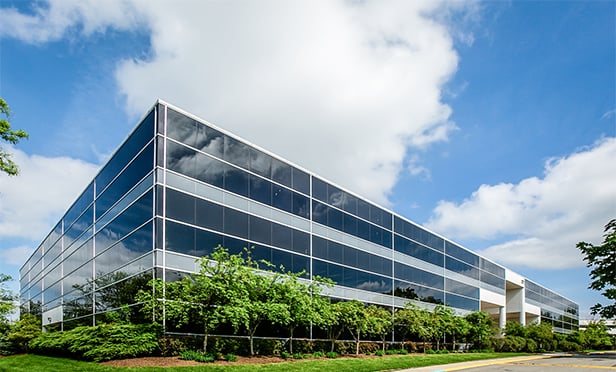
Within the Inland Empire's commercial real estate market, retail accounts for the most significant amount of distress, as many developers built ahead of rooftops that now sit largely vacant or failed to materialize altogether. Furthermore, investment activity intensified dramatically from 2005 to 2007, a period when prices were at or near peak levels, high leverage loans were commonplace and underwriting criteria was most lax.
More than half of the outstanding CMBS debt in the Inland Empire market is backed by retail properties, and about three-quarters of this debt was originated between 2005 and 2007. In the CMBS segment, foreclosures/REOs are more typical than modifications and extensions in the Inland Empire retail sector. Given the significant number of delinquent CMBS retail loans in the market, more discounted assets are likely to become available to investors this year.
The local housing downturn will continue to adversely impact the Inland Empire apartment market this year, though operational performance will vary significantly by location. A glut of foreclosed single - family homes have flooded the market in recent years, and investors have turned many of these properties into rentals. Competition from discounted shadow rentals has been especially strong in the Southwest Riverside County, Perris and Palm Springs/Palm Desert sub markets, areas that also account for outsized shares of apartment distress.
A handful of the troubled properties, including two that received extensions to existing loans, were originally purchased for conversion to condos. Banks have reclaimed only a few apartment assets to date, though several properties are at risk due to maturing debt or operational issues. Within the CMBS sector, roughly one-quarter of the outstanding debt backed by local apartments is already past due, while 10% of the loans are at estimated loan-to-values of 100% or more, and over 30% report debt service coverage ratios of less than 1.0. As 2010 progresses, more REO activity is likely as the weak housing market drags on the local economy and apartment market performance, leading to another tough year for multi-family property owners.
By dollar volume, office properties account for 11 % of distress in the Inland Empire metro area. The loss of more than 25,000 white-collar positions since the onset of the recession has returned local office using employment to late-2004levels, which combined with a 20% increase in office stock during the same period, has resulted in significant oversupply conditions. The impact of the recession on local operating conditions has most affected the Rancho Cucamonga/ Ontario/Fontana sub market. Over the past two years, the submarket's vacancy rate has spiked more than 1,600 basis points to the mid-30% range. Several troubled assets are located in the submarket, including a 390,000-square foot office property that most recently appraised for just 40% of its late-200S purchase price. While this property remains in limbo for now, foreclosure proceedings have been initiated on several other local office properties, which means investors with cash in hand may see more strong acquisition opportunities emerge in the near term.
The Inland Empire is an important distribution hub, and the pullback in consumer and business spending has taken a toll on local industrial property fundamentals. Marketwide, the vacancy rate has more than doubled since 2006, to 14.1%, the highest rate on record since the early 1990s. Fortunately, construction of industrial projects requires less time than most types of commercial properties, and builders were able to rein in development quickly when the economy took a turn for the worse. During 2009, just 5.5 million square feet of new industrial space came on line, compared to an annual average of more than 21 million during the previous four years.
Within the CMBS segment, approximately 5.5% of local industrial debt is 60-plus days delinquent, which compares favorably to other core property sectors, and the overall metro area at more than 13%. To date, foreclosure activity has been limited to smaller industrial properties of around 20,000 square feet to 50,000 square feet, though the list of troubled assets includes a few industrial parks built in the late 1980s or early 1990s, which could translate into more foreclosure sales by later this year. The owner of one large industrial property received a loan extension last year, but the debt remains on ratings watch lists with a modified maturity date now just a few months away.
Meanwhile, the long-term economic outlook for the Inland Empire remains positive due to expectations for the return of healthy population growth, but significant headwinds will persist in the near term. To start, the local housing market remains extremely weak, weighed down by a glut of vacant units and for-sale inventory. Home prices in the market have been among the hardest hit in the nation, with the median down almost 60% from just three years ago. Within the Inland Empire market, residential mortgage delinquency and foreclosure rates are well above US averages, which likely will keep downward pressure on home prices this year, hampering the onset of a sustainable local economic recovery. Nonetheless, modest net job creation of around 6,800 positions is anticipated this year, a welcome turnaround following the loss of nearly 130,000 jobs between 2008 and 2009.
Tight credit market conditions, the weak economy and a wide gap between buyers' and sellers' price expectations continued to drag on sales velocity last year. During 2009, the number of commercial real estate transactions in the Inland Empire market slipped almost 29%, on top of a 30% reduction recorded in 2008.
In addition to difficulties securing financing and a prevailing sense of caution among investors, softer occupancy and rent reductions have contributed to price and cap rate correction marketwide. By property type, the most dramatic cap rate increases have been recorded in the industrial sector, where the average is up 275 to 300 basis points from the 2007 low point. Cap rate adjustments for the other core property sectors have been less severe, averaging in the 100 to 200 basis point range, but they vary significantly by asset quality and location.
As 2010 unfolds, a growing number of investors will move off the sidelines to take advantage of strong acquisition opportunities and discounted REO properties that become available. With deal flow likely to rise off the bottom this year, investors will begin to regain confidence in prices, setting the stage for more robust transaction velocity by late 2010 and 2011.
GlobeSt.com News Hub is your link to relevant real estate and business stories from other local, regional and national publications.
© 2025 ALM Global, LLC, All Rights Reserved. Request academic re-use from www.copyright.com. All other uses, submit a request to [email protected]. For more information visit Asset & Logo Licensing.







